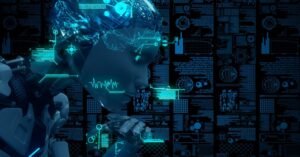We stand at the precipice of a new era in industrial safety and efficiency. The workforce is evolving into a dynamic fusion of humans and Artificial Intelligence (AI) working together to ensure safer and more effective processes. This concept, commonly referred to as “augmented workers,” presents a future that’s not restricted to the pages of a science fiction novel but is progressively becoming a practical reality in modern industries.
In this article, we will navigate the realms of augmented workers and elucidate the profound impact of AI in ensuring process safety. This exploration of cutting-edge AI applications, from real-time monitoring and predictive analysis to decision support, aims to shed light on the remarkable potential of this transformative technology.
With the incessant advancements in AI, the traditional methods of ensuring safety and efficiency are undergoing a paradigm shift. Augmented workers stand at the heart of this transformation, providing a blueprint for a future that combines the irreplaceable ingenuity of humans and the unprecedented processing capabilities of AI.
Understanding Augmented Workers
Augmented workers signify individuals who harness the power of modern technologies to amplify their innate capabilities. This concept, while relatively new, is a natural progression from humanity’s age-old practice of utilizing tools to enhance performance and productivity.
With the emergence of AI and machine learning, the prospects for worker augmentation have escalated to new heights. Augmented workers are not merely users of sophisticated tools, but they also form an integral part of a symbiotic relationship with technology, particularly AI. This human-AI collaboration transcends the traditional worker-tool dynamic, paving the way for improved performance, enhanced safety, and increased productivity.
Augmented workers, equipped with AI-powered tools and systems, embody an innovative approach to tackling complex tasks. They represent a bold step forward in harnessing technology to empower workers, enhance skill sets, and ultimately, foster a safer and more efficient working environment.
AI in Process Safety: A Synergistic Approach
The integration of AI in process safety marks a significant departure from traditional approaches. AI’s potential to revolutionize process safety lies not in replacing human workers but in augmenting their capabilities, thereby creating a synergy that culminates in improved safety outcomes.
AI-based systems can process vast volumes of data, identify patterns, and generate insights at a speed and accuracy level that surpass human capabilities. When applied to process safety, these AI capabilities facilitate the constant monitoring of diverse parameters, enabling early detection and mitigation of potential safety issues.
The synergy of humans and AI in process safety extends beyond real-time monitoring. AI also empowers workers with predictive capabilities, using historical and real-time data to foresee potential safety risks. By augmenting human decision-making with data-driven insights, AI paves the way for more informed, proactive approaches to process safety. The result is a potent human-AI partnership that bolsters safety while enhancing efficiency and productivity.
The Power of Real-Time Monitoring
Real-time monitoring is one of the most significant advantages offered by AI technology in process safety. AI-powered systems can incessantly monitor a multitude of parameters, from equipment performance to environmental conditions, thereby providing a comprehensive view of the operational landscape. This real-time overview helps identify anomalies that may signify potential safety risks, enabling timely intervention.
AI’s power in real-time monitoring extends beyond mere data collection. Advanced machine learning algorithms can sift through the vast amount of data, identifying patterns and relationships that may elude human analysis. This insight is invaluable for enhancing process safety, as it allows for a more nuanced understanding of potential risks and hazards.
Moreover, the ability of AI to process and analyze data in real-time not only facilitates immediate response to safety threats but also informs proactive measures to prevent incidents. This ability to ‘see and act in the now’ has profound implications for process safety, offering an unprecedented level of protection for workers and assets.
Predictive Analysis and Decision Support
In addition to real-time monitoring, AI also brings predictive analysis capabilities to the table, a transformative tool for process safety. AI algorithms can examine historical and real-time data to predict potential future safety issues. These predictions can alert workers to take preemptive action, transforming reactive safety measures into proactive strategies.
This predictive power is not limited to anticipating equipment failures or detecting imminent safety risks. AI can also predict the potential impact of changes in operational procedures, helping to devise optimal safety strategies. It can simulate various scenarios and determine the safest course of action, thereby bolstering decision support.
By supplementing human decision-making with data-driven insights, AI offers a robust decision-support mechanism. It enables a more informed and proactive approach to process safety, enhancing the capacity to foresee and manage risks, thus ensuring a safer operational environment.
Augmented Workers: Potential Case Studies
Several industries might soon be capitalizing on the concept of augmented workers. For instance, in the oil and gas sector, companies might be looking to use AI-powered wearable devices to monitor workers’ health parameters and environmental conditions in real-time, which could enhance worker safety in hazardous environments.
In another potential application, manufacturing firms could employ AI-driven predictive maintenance systems to forecast machinery failures. These systems could enable workers to intervene before an equipment failure occurs, thereby mitigating safety risks associated with such failures.
Similarly, in the healthcare sector, AI could play a significant role in augmenting the abilities of healthcare professionals. From the predictive analysis of patient data to assist in diagnosis and treatment, to real-time monitoring of patient vitals, the potential for AI in this field could demonstrate the substantial potential for augmented workers across diverse industries.
These scenarios highlight the transformative impact that the human-AI synergy could have across various sectors, underscoring the vast potential of augmented workers in enhancing process safety.
Upskilling the Workforce: A Key Consideration
The transformation from traditional labor roles to augmented workers will not happen spontaneously. It will require a significant investment in upskilling the current workforce. Employees will need to be taught how to use the AI tools and systems effectively and understand how they can contribute to a safer work environment.
An upskilled workforce will be more capable of navigating AI interfaces, understanding complex analytics, and making better-informed decisions based on the data provided by AI systems. They will also be better equipped to handle emergency situations, as they will be able to react quickly to the real-time information provided by the AI.
However, it’s essential to remember that while technology is a powerful tool, it is only as good as the people using it. Therefore, organizations must place equal emphasis on upskilling their human resources as they do on implementing technological advancements.
Challenges in Implementing Augmented Workers
Implementing augmented workers in process safety poses its own set of challenges. Firstly, there’s the technical challenge of integrating AI and other technologies into existing systems and processes. This can be a complex and time-consuming process, requiring significant technical expertise.
Additionally, there may be resistance from employees who are wary of the changes brought about by AI. Workers may fear that AI will make their jobs redundant, leading to job losses. It’s therefore crucial for organizations to communicate effectively with their employees, reassuring them that AI is designed to assist rather than replace them.
Finally, the legal and regulatory implications of using AI in the workplace need to be considered. As the use of AI in the workplace is still a relatively new field, there may be gaps in existing laws and regulations. Organizations must therefore ensure that they stay abreast of any changes in legislation and adhere to all relevant laws and regulations.
The Future of Augmented Workers in Process Safety
As we move into the future, the role of augmented workers in process safety is expected to become even more significant. With advancements in AI and machine learning, we can expect to see more sophisticated tools and systems designed to enhance worker safety and efficiency.
One potential area of growth is the use of AI in predictive analysis. By analyzing patterns and trends in vast amounts of data, AI could potentially predict potential safety issues before they occur, allowing for preemptive action. This could have a significant impact on process safety, potentially reducing the number of accidents and incidents.
In conclusion, while the implementation of augmented workers in process safety does pose some challenges, the potential benefits in terms of improved safety and efficiency are immense. With careful planning, appropriate upskilling, and effective communication, organizations can successfully navigate this new landscape and create a safer, more efficient workplace.
Conclusion
As we delve into the realm of possibilities where humans and artificial intelligence converge, we can imagine a future where augmented workers play a vital role in enhancing process safety. By incorporating AI tools and systems, organizations can potentially transform their workforce into a more effective and safety-conscious entity.
By leveraging the real-time monitoring and predictive capabilities of AI, organizations can proactively address potential safety risks, thereby reducing accidents and mishaps. Augmented workers equipped with AI-powered tools can make more informed decisions, significantly enhancing the overall safety and efficiency of their operations. However, it’s important to remember that AI tools are just that – tools. They are designed to support and augment human abilities, not replace them.
In conclusion, the path to integrating AI into the workplace and creating an environment of augmented workers is not without its challenges. Still, the potential rewards are immense. With careful planning, effective communication, and a commitment to upskilling the workforce, organizations can successfully navigate this new landscape. They can leverage the human-AI synergy to create a safer, more efficient work environment, heralding a new era in process safety.




